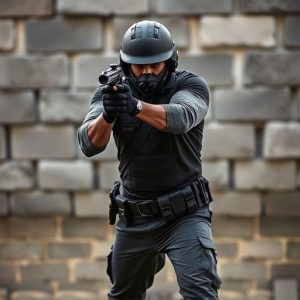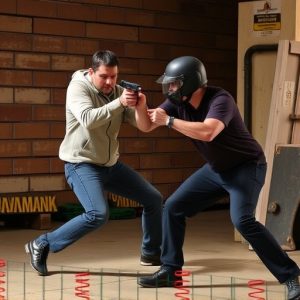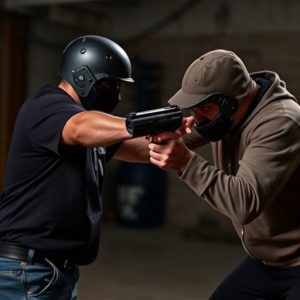Non-Lethal Weapon Training Certification: Police Stun Guns & Effective Use
Police Grade Stun Gun Options are non-lethal weapons that empower officers to de-escalate high-risk…….
Police Grade Stun Gun Options are non-lethal weapons that empower officers to de-escalate high-risk situations, enhancing safety for both suspects and law enforcement. With diverse models catering to specific needs, these stun guns offer effectiveness, reliability, and advanced features like LED flashlights and GPS tracking. Rigorous certification involving live-fire simulations, hands-on scenarios, and regular refreshers ensures officers are proficient in deployment techniques and decision-making under pressure. Adhering to legal considerations and ethical guidelines is crucial for responsible use and public trust when employing Police Grade Stun Gun Options.
In today’s diverse law enforcement landscape, non-lethal weapon training is an indispensable skill. This article explores the critical role of police grade stun guns and their certification process. We delve into the importance of understanding these tools, reviewing various stun gun options available to officers, and highlighting certification requirements for safe and effective deployment. Additionally, we discuss best practices, legal considerations, and ethical use guidelines, ensuring professionals are equipped with both knowledge and responsibility.
- Understanding Non-Lethal Weapon Training and Its Importance
- Police Grade Stun Guns: An Overview of Options
- Certification Requirements for Effective Deployment
- Training Methods and Best Practices
- Legal Considerations and Ethical Use Guidelines
Understanding Non-Lethal Weapon Training and Its Importance
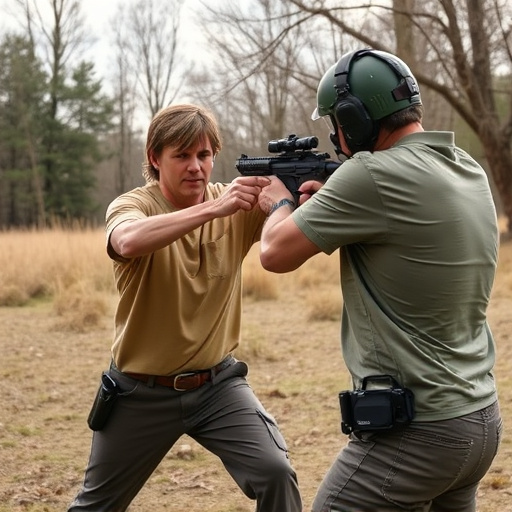
Non-lethal weapon training is an essential component of modern law enforcement strategies, equipping officers with tools to de-escalate potentially dangerous situations without resorting to fatal force. This specialized training focuses on the use of non-deadly force options, such as stun guns, pepper spray, and less-lethal munitions, to control and subdue individuals who pose a threat. With the availability of diverse Police Grade Stun Gun Options in the market, officers can choose equipment that aligns with their specific needs and tactical requirements.
The importance of this training lies in its ability to minimize harm to both suspects and law enforcement personnel, fostering safer communities. By understanding the unique properties and applications of non-lethal weapons, officers can make informed decisions in high-stress situations, ensuring public safety and maintaining the integrity of law enforcement practices.
Police Grade Stun Guns: An Overview of Options
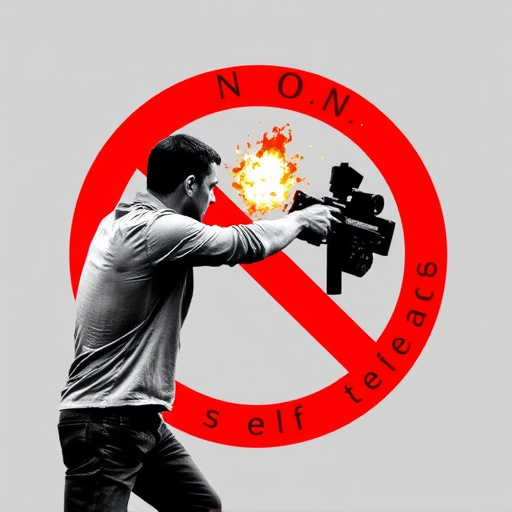
In the quest for non-lethal weapon training, police grade stun guns top the list for many professionals due to their effectiveness and reliability in de-escalating dangerous situations. These devices emit a powerful electric current that temporarily disables a target, providing crucial time for officers to gain control or call for backup. The market offers a wide array of options when it comes to police grade stun guns, each with distinct features catering to various needs and preferences.
From compact models designed for easy concealment to more robust variants equipped with advanced safety mechanisms, the choice is vast. Modern stun guns often incorporate LED flashlights and multiple settings for output voltage, ensuring versatility in different tactical scenarios. Additionally, some manufacturers offer models with GPS tracking, allowing agencies to monitor their officers’ equipment for better accountability.
Certification Requirements for Effective Deployment
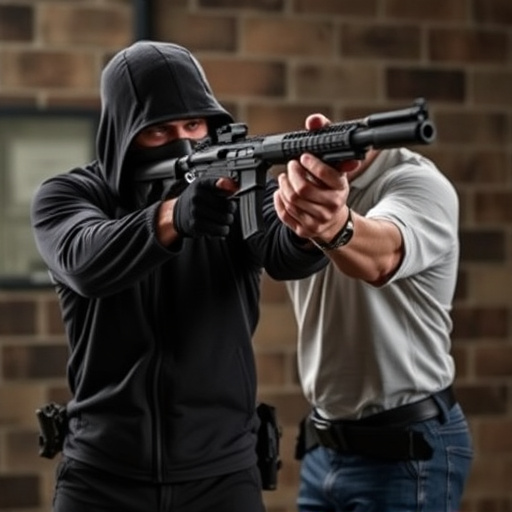
To ensure effective deployment, non-lethal weapon certification requires a rigorous understanding of both the equipment and its intended use. For law enforcement professionals, police grade stun gun options are a key consideration. These devices demand specialized training to guarantee safe and strategic use. Certification programs typically involve comprehensive instruction on device operation, safety protocols, and legal implications. Officers must demonstrate proficiency in de-escalation techniques, proper physical application, and awareness of local legislation governing non-lethal force.
The ideal certification prepares individuals to make sound judgments under pressure. It emphasizes the responsibility that comes with carrying and using a stun gun, fostering a culture of safety and accountability. By adhering to these strict requirements, law enforcement can maximize the effectiveness of non-lethal weapons while minimizing risks associated with their deployment.
Training Methods and Best Practices

Training methods for non-lethal weapon certification, such as those for Police Grade Stun Gun options, should be comprehensive and practical. This includes live-fire simulations to familiarize officers with the device’s range, cycle of fire, and safety mechanisms. Additionally, hands-on training in different scenarios like crowd control, personal protection, and tactical situations is essential. Officers should learn proper grip, deployment techniques, and how to minimize harm while maximizing effectiveness.
Best practices emphasize consistent, regular training sessions to reinforce learning. Instructors should provide detailed feedback, focusing on not just technique but also decision-making under stress. Incorporating real-world case studies can significantly enhance understanding of when and how to deploy non-lethal weapons responsibly. Moreover, ongoing refresher courses are crucial to keep officers updated with the latest equipment models and tactics, ensuring they remain proficient in their use.
Legal Considerations and Ethical Use Guidelines
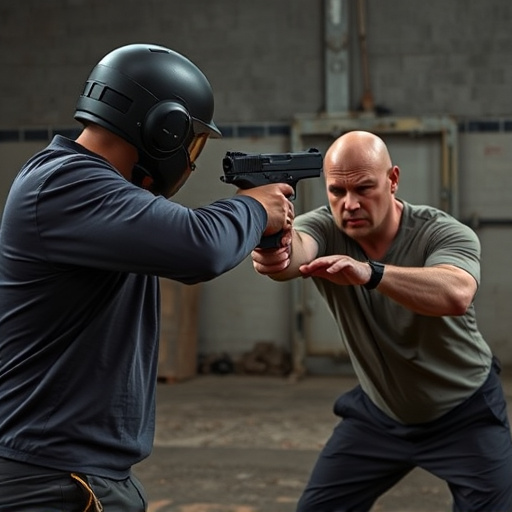
When pursuing Non-Lethal Weapon Training Certification, understanding legal considerations and ethical use guidelines is paramount. These aspects are especially crucial when considering Police Grade Stun Gun Options. Each jurisdiction has its own set of rules governing the possession and deployment of stun guns or electroshock weapons. Individuals seeking certification must familiarize themselves with local, state, and federal laws to ensure compliance. This includes understanding the types of areas where stun guns can be legally carried, restrictions on their use, and any necessary permits or licenses.
Ethical use guidelines further emphasize responsible handling. These guidelines outline when and how these devices should be deployed to minimize harm and respect individual rights. Training programs often include extensive instruction on de-escalation techniques, ensuring that the use of stun guns is a last resort in high-stress situations. Adherence to these legal and ethical parameters not only ensures safety but also bolsters public trust in those who carry and use non-lethal weapons.
Obtaining a non-lethal weapon training certification is not just about learning how to deploy a police grade stun gun; it’s about ensuring public safety and adhering to ethical guidelines. By understanding the importance of this training, familiarizing yourself with options like advanced stun guns, and mastering effective deployment methods, you’re well on your way to making informed decisions in critical situations. Remember, proper certification and adherence to legal considerations are key to responsible use, ultimately fostering a safer community.
